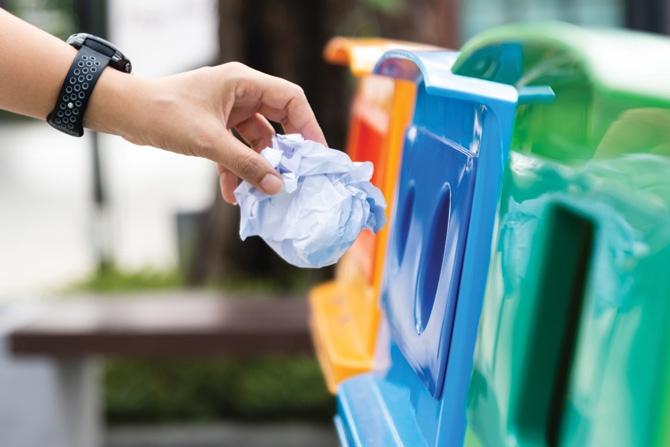Commercial and residential buildings account for 39% of the carbon dioxide emissions in the United States. Is your property management company doing everything it can to be more sustainable? Now more than ever, it’s essential to make sure you’re investing in green initiatives, not just because it’s better for the environment but because your business will depend on it.
The Growing Demand for Sustainability
According to a survey by Forrester, 32% of consumers prioritize companies that are actively reducing their impact on the environment. Today’s renters don’t just like sustainable features — like high-efficiency appliances and smart thermostats — they expect them to be already built-in. As more millennial and gen z renters enter the market, this demand is only going to increase. And it’s not just renters; investors will also be looking for buildings that are LEED-certified and eco-conscious, too. Nielsen reports that 81% of consumers worldwide believe it’s very important for companies to have environmental improvement as an objective.
If you’re not actively improving your sustainability efforts and outfitting your units with the latest energy-saving technologies, you’ll be at risk of falling behind the competition. By making it a point to prioritize sustainability now, you can stay ahead of the curve, attract more renters, boost profitability and better the planet. Here are five ways you can improve your green initiative:
1. Install Energy Efficient Appliances
The majority of renters (81%) are interested in having Energy Star Certified appliances and 79% are interested in having a high-efficiency washer and dryer, according to the NMHC / Kingsley Associates Apartment Resident Preference Report. Based on an article by Globe St., 69% of residents were interested in living in an energy-efficient or green building and are willing to pay more to do so. If your building doesn’t already have energy-efficient appliances, then this is a simple and affordable way to increase desirability and cut back on your energy consumption.
2. Implement a Community Recycling Program
Recycling is not a new trend, but you’d be surprised by how many buildings don’t have a program in place for their residents. Based on the NMHC / Kingsley Associates Report, 79% of renters are interested in having a recycling program. By allocating a communal space for residents to recycle, it increases their satisfaction in knowing that they live in a building that aligns with their personal values.
In addition to a regular recycling area, you could also offer residents a place to recycle harder-to-dispose items, like light bulbs, batteries and electronics. Based on the report, 57% of renters are interested in this. Plus, it doesn’t have to cost you a thing, as many nonprofit organizations come and pick up these materials free of charge.
If your building already offers a recycling program, be sure you’re communicating this to your residents effectively by posting plenty of signs around the community and including information about it in your online resources.
3. Adopt a Utility Management Service
Without a utility management system in place, it can be difficult to detect spikes or leaks, which can cost your business and the environment. Using a property management software with built-in utility management can help you identify issues quickly, reduce usage, increase efficiency.
In addition, utility analytics can help you benchmark your building against other buildings in your area, so you can find opportunities to save. According to a study by the U.S. Environmental Protection Agency, on average, buildings that consistently benchmarked their energy performance saved 2.4% annually, with a total savings of 7%.
4. Embrace Smart Home Technology
Renters today prefer to do everything from their mobile phones, so it’s only natural that they would also want to interact with their apartments the same way. In fact, about 45% of respondents to the National Apartment Association’s survey stated that they are open to requesting energy-efficient improvements at the properties where they live.
And a whopping 77% of renters are interested in smart thermostats, based on results from the NHMC / Kingsley Associates survey. By incorporating more smart home features — like smart thermostats and voice automated light switches — into your units, you’ll be better able to meet your current and future residents’ needs.
5. Invest in Renewable Energy
The NMHC / Kingsley Associates report revealed that 63% of renters are interested in buildings that invest in renewable energy. While renewable energy may seem like a big initial investment to make, it can pay off in the long run. For instance, installing solar panels can bring your common area utility costs down, increase your building’s value, and make it more attractive to investors. In addition, many states offer tax incentives for residential buildings that implement renewable energy technology, which can further boost your bottom line. Other renewable energy technologies you can add to your building include electric vehicle charging stations and rooftop wind turbines.
By making the most of these green initiatives, you can reduce costs, increase the attractiveness of your building to future renters and investors, and have a positive impact on the planet for years to come.
Appfolio Property Management
appfolio.com










